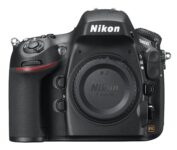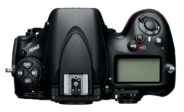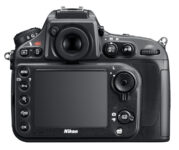Announced
Production status
System
Nikon F system cameras
- Nikkorex F
- Nikkormat EL
- Nikkormat ELW
- Nikkormat FS
- Nikkormat FT
- Nikkormat FT2
- Nikkormat FT3
- Nikkormat FTN
- Nikon D3
- Nikon D3s
- Nikon D3X
- Nikon D4
- Nikon D4s
- Nikon D5
- Nikon D6
- Nikon D600
- Nikon D610
- Nikon D700
- Nikon D750
- Nikon D780
- Nikon D800
- Nikon D800E
- Nikon D810
- Nikon D850
- Nikon Df
- Nikon EL2
- Nikon EM
- Nikon F
- Nikon F100
- Nikon F2
- Nikon F3
- Nikon F4
- Nikon F5
- Nikon F6
- Nikon FA
- Nikon FE
- Nikon FE10
- Nikon FE2
- Nikon FG
- Nikon FG-20
- Nikon FM
- Nikon FM10
- Nikon FM2
- Nikon FM2/T
- Nikon FM3A
- Nikon N2000
- Nikon N2020
- Nikon N4004
- Nikon N4004S
- Nikon N50
- Nikon N5005
- Nikon N55
- Nikon N60
- Nikon N6000
- Nikon N6006
- Nikon N65
- Nikon N70
- Nikon N75
- Nikon N80
- Nikon N8008
- Nikon N8008S
- Nikon N90
- Nikon N90S
Nikon D800
35mm AF digital SLR camera • Discontinued
Specification
| Format: | |
| 35mm full frame | |
Imaging sensor: | 35.9 × 24mm CMOS sensor |
Resolution: | 7360 × 4912 - 36 MP |
Sensor-shift image stabilization: | - |
| Nikon F [46.5mm] | |
| Shutter: | |
Type: | Focal-plane |
Model: | Electronically controlled |
Speeds: | 30 - 1/8000 + B |
| Exposure: | |
Exposure metering: | Through-the-lens (TTL), open-aperture |
Exposure modes: | Programmed Auto |
| Aperture-priority Auto | |
| Shutter-priority Auto | |
| Manual | |
| Physical characteristics: | |
Weight: | 1000g |
Dimensions: | 146x123x81.5mm |
Manufacturer description
TOKYO - Nikon Corporation is pleased to announce the release of the Nikon D800 FX-format digital SLR camera. The D800 offers the world's highest* effective pixel count of 36.3-million pixels, and is equipped with the new EXPEED 3 image-processing engine and a 91K-pixel (approximately 91,000 pixels) RGB sensor for overwhelming definition and image quality. Nikon will be exhibiting the D800 at the CP+ CAMERA & PHOTO IMAGIING SHOW, to be held Thursday, February 9 through Sunday, February 12 in Yokohama, Japan. This exhibition is open to the public.
The D800, a new FX-format model offers a noteworthy effective pixel count of 36.3-million pixels. At its core is superior image quality equal to that achieved with medium-format digital cameras. The D800 is also equipped with a number of new functions for a high level of added value, all in a compact and lightweight body.
In addition to a new Nikon FX-format CMOS image sensor and the new EXPEED 3 image-processing engine, specifically optimized for Nikon digital SLR cameras, the D800 is equipped with a new 91K-pixel (approximately 91,000 pixels) RGB sensor that supports the Advanced Scene Recognition System with its noteworthy advances in scene recognition performance. The camera is also equipped with a number of new functions, including Multi-area mode Full HD D-Movie that enables movie recording using either the FX-based movie format or the DX-based movie format.
For users who demand an even greater sense of definition, Nikon also releases the D800E, a model that offers increased resolution for images with more dimension.
D800 Development Background
Reflecting Nikon's efforts to respond to a number of demands, including those for a higher pixel count, better image quality, and a smaller and lighter camera, the D800 is a digital SLR camera developed to capture still images with the superior resolution and record movies with the true high-definition picture quality demanded not only by advanced amateur photographers but also by professionals.
Nikon is responding to the needs of users who demand more from photographs and movies with the recently announced D4, a flagship model that combines excellent definition and image quality with superior high-speed performance, and the D800, a model that offers the ultimate in resolution demanded for nature and studio photography.
D800 Primary Features
1. New Nikon FX-format CMOS image sensor
The D800 is equipped with a new Nikon FX-format CMOS image sensor and the new EXPEED 3 image-processing engine for Nikon digital SLR cameras. This new image-processing engine is faster and offers greater performance. The camera also offers the world's highest* effective pixel count of 36.3-million pixels. When combined with the sharp rendering of NIKKOR lenses, images exhibiting resolution equal to that achieved with medium-format digital cameras are possible.
The D800 also responds to the demands of professional photographers with a standard sensitivity range of ISO 100–6400, and additional support for equivalents of ISO 50 (Lo 1) and up to ISO 25600 (Hi 2), for superior image and picture quality in dimly lit situations, such as just before sunrise and just after sunset, with shooting of still images as well as movie recording.
2. New 91K-pixel RGB sensor for the more accurate Advanced Scene Recognition System
The D800 is equipped with a new 91K-pixel (approximately 91,000 pixels) RGB sensor. When a human face is detected in the frame, 3D Color Matrix Metering III bases exposure control on the brightness of that face so that the face is optimally exposed even with backlighting. In addition, the superior resolution of the metering sensor, which makes full use of an incredible 91,000 pixels, enables extremely precise analysis of the scene for more accurate control over autofocusing, auto exposure, i-TTL flash control, and auto white balance.
3. Multi-area mode Full HD D-Movie for movie recording using one of two movie formats
The D800 records movies exhibiting superior resolution with optimal processing of information acquired from the 36.3-million pixel image sensor. Recording of 1920 x 1080p/30-fps full-HD movies is supported, and users can choose to record using the FX-based movie format or the DX-based movie format according to recording conditions. The FX-based movie format offers a shallow depth-of-field with an emphasis on blur characteristics while the DX-based movie format enables recording of movies that bring subjects closer when lenses with short focal lengths are used. The D800 is also equipped with a headphone jack and supports precise adjustment of microphone sensitivity. In addition, it supports simultaneous display of movies or the movie live view display in the camera monitor and on an external monitor. Further, the D800 responds to the needs of professionals who require uncompressed movie files with the ability to record movies directly to an external HDMI recorder in movie live view mode. The D800 also offers a time-lapse photography function that captures images at a selected interval and then combines the images to create a time-lapse movie that shows the changes in a particular scene that occur over time.
4. Viewfinder frame coverage of approximately 100%*1 and a lightweight and durable water- and dust-resistant body
The viewfinder built into the D800 supports a frame coverage of approximately 100%*1 and magnification of approximately 0.7x*2. Adoption of a magnesium alloy for the body gives the camera the same level of durability as the D700 with a weight approximately 10% less.
5. Support for high-speed continuous shooting and a variety of battery types with the Multi-Power Battery Pack MB-D12 (optional)
The MB-D12 supports the Rechargeable Li-ion Batteries EN-EL15 and EN-EL18, common AA batteries, and the AC Adapter EH-5a/b (with Power Connector EP-5B). When the MB-D12 is mounted on the D800, high-speed continuous shooting at approximately 6 fps* using the DX-format image area is possible. The MB-D12 also offers the added convenience of controls, including shutter-release button, AF-ON button and multi-selector, for vertical shooting. What's more, the same seals as those used for the D800 with its magnesium body offer superior resistance to dust and water.
6. Other D800 Functions and Features
- A 51-point AF system for improved subject acquisition and focus performance under dim lighting. In addition, 11 focus points (five at center with an addition three to each side) are fully functional when lenses with a maximum aperture of f/8 are used.
- A 3.2-inch, approximately 921k-dot LCD monitor with reinforced glass, automatic monitor brightness control, and wide viewing angle
- A virtual horizon that shows the degree to which the camera is tilted sideways (roll), or forward or backward (pitch) with display in the monitor and viewfinder
- A new shutter unit that has passed testing for 200,000 cycles and supports a maximum shutter speed of 1/8000 s and flash sync speed of 1/250 s
- Continuous shooting at 4 (FX-format/5 : 4 image area) or 5 (DX-format/1.2x image area) fps*
- CompactFlash and SD dual memory card slots
- Support for SuperSpeed USB (USB 3.0)
The D800E with specifications for even greater resolution with an effective pixel count of 36.3-million pixels
- In-camera disabling of the aliasing and moiré pattern reduction operation performed by the optical low-pass filter built into the D800E allows light passing through a NIKKOR lens to strike photodiodes directly for even greater resolution. This makes this model optimal for landscape and artistic photography with which higher resolution and clear definition is demanded. With the exception of the modification indicated above, all other functions and characteristics are the same as with the D800.
- Aliasing and moiré patterns may be more noticeable in images captured with the D800E with some subjects, scenes or shooting conditions.
- Optical low-pass filter IR coating and anti-reflection coating performance is the same with both the D800 and the D800E.
Similar cameras (2)
35mm full frame • Auto focus • Digital • Singe-lens reflex • Nikon F mount
| Model | Shutter | Metering | Modes | Year |
|---|---|---|---|---|
| Kodak DCS Pro 14n | E, 1/4000 | TTL • OA | PASM | 2002 ● |
| Kodak DCS Pro SLR/n | E, 1/4000 | TTL • OA | PASM | 2004 ● |



